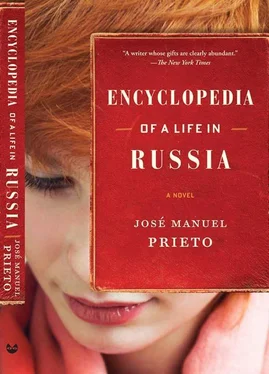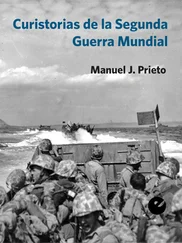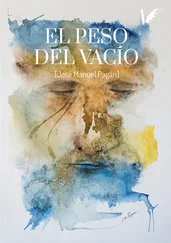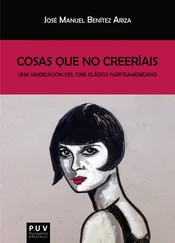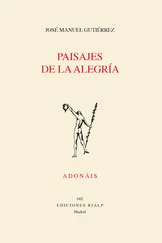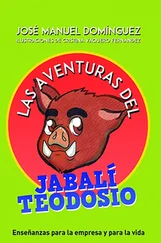I. In 1910, four years before the premiere of Song of Triumphant Love, her apotheosis, Vera Vasilievna, the future great star of Russian silent film (one of those butterflies of pleated ORGANDY at her waist), took special care to exchange the crude fetter of her hard maiden name of Levchenko for the alluring and exotic double-stranded necklace of Холодная (Kholodnaya). When this name, full of soft a s and o s, was murmured in every salon in Muscovy, many imagined it to be a very apt pseudonym. In Russian, kholodnaya means “cold woman,” and Vera Lánina, the adulterous beauty she played in At the Fireside, was indeed cold and distant. Russia’s so-called “Silver Age” (another lovely name) had had its tastes distorted by Игорь Северянин (Igor Severyanin , a pen name meaning “Northerner”), Андрéй Бéлый (Andrei Biely , whose chosen pseudonym was “White”), and Сáша Чёрный (Sasha Chorny, or “Black,” another nom de plume). Thus when, after At the Fireside, everyone flocked to her next film, Forget Your Home, the Fire There No Longer Burns, no one was inclined to lend the slightest credence to the hypothesis that Kholodnaya was simply her married name.
a) This quaintly antiquated vogue for pseudonyms has a fossil: Иосиф Виссарионович Сталин (Joseph Vissarionovich Stalin, whose adopted monicker means “man of steel”).
For her husband, Vladimir Kholodny, the name had no exotic meaning: what’s more, he was the editor of Авто or Auto ( Steam and Speed) the first Russian magazine for car enthusiasts. Vera Vasilievna Levchenko, too, seems to have had a taste for technological novelty. Four years later, metamorphosed into “the queen of the screen,” she drove only the latest model Renaults for her appearances in Daughter of the Century, Why Do I Love So Madly? and The Chess Game of Life.
b) Already in 1918 automobiles summoned notions of power and strength. Trotsky scandalized Moses Nappelbaum, a portraitist whose studio was on Nevsky Prospekt, by having his picture taken in a chauffeur’s uniform adorned with leather and buckles, precisely the attire that would become characteristic of the civil war’s terrible commisars.
In 1914, with the outbreak of world war, the fiery glances and heavily retouched eyes of Lyda Borelli and Francesca Bertini suddenly caught on in Moscow. That same year, Vera Kholodnaya, a complete unknown, appeared in the offices of gospodín Khanzhonkov, a magnate of the nascent film industry. Vera Vasilievna signed a five-year contract with Khanzhonkov, without suspecting that this gospodin was the devil and she would die at the end of that period.
She acted in forty-seven films of love and despair. Her heroines’ laughter always contained a note of sadness: Pola, the unhappy acrobat, who executed dangerous moves and one night lost her grip on the trapeze, flew across the tent, and fell, luxuriously dressed — in a hat adorned with ostrich feathers — into a beautiful Muscovite mansion.
On October 25, by the old calendar, The Human Beast premiered (that cinema on Nevsky Prospekt still exhibits the film’s poster, behind glass). This prophetic title was followed in that season’s program, as we can see, by others no less foreboding: Wounded Soul, Be Silent My Sadness, and finally a filmed version of a story by Tolstoy that was a true premonition: The Living Corpse.
When the contract ended in 1919 it was easier to die of typhoid fever than of La Española, the flu pandemic with a name that sounded like one of her melodramas, the last one, and that killed La Kholodnaya on February 16 at the age of twenty-five.
LINDA EVANGELISTA. As if I were called THELONIOUS MONK and she were LINDA EVANGELISTA.
I knew how to lead a false existence under those names; we had only to believe in our metamorphosis, leap onto the magic carpet of a perfect life, and contemplate from there the ciphers that denoted a bad year, any bad year—1990, 1991—as if it were 1819 or 1099 or some other historically significant combination of numerals, viewed from a distance.
I’d discovered the name in Vogue one afternoon as I was analyzing the season’s latest accessories with all the interest and archaeological passion of a scholar who specializes in Greek togas. The alias was so perfectly suited to my project that I never hesitated for a second to make use of it. Moreover, there was LINDA herself, whom I encountered swimming in the fragrance of a page impregnated with OPIUM. I still have the pictures: LINDA poses beneath the arch of a dark medieval bridge, as if abandoned there by a perverse djinni out of the Thousand and One Nights. She is gazing into the distance toward a love, an impossible love, and, in a gesture of farewell, has extended arms that are covered in dazzling fake gems. Heavy chains emphasize her waist; their sparkle heightens the black of a dress that clings to her body like “a second skin” but which, from the hips down, floats into airy flights of tulle, a sfumato through whose transparences can be seen, in fierce outline, LINDA EVANGELISTA’S swooningly perfect legs: fishnet stockings, a capricious pair of pointy-toed pumps. An invitation to buy a few of Yves Saint Laurent’s atomizers and also perchance to reflect upon the fleeting nature of our earthly existence.
For I would never be able to encompass all the women who floated toward me down Nevsky Prospekt, each a captive within the watertight bubble of her own beauty.Тысячи сортов шляпок, платьев, платков, — пестрых, легких, к которым иногда в течение целых двух дней сохраняется привязанность их владетельниц, ослепят хоть кого на Не-вском проспекте. Кажется, как будто целое море мотыльков поднялось вдруг со стеблей и волнуется блестящею тучею над черными жуками мужеского пола. . А какие встретите вы дамские рукава на Невском проспекте! Ах, какая пре-лесть! Они несколько похожи на два воздухоплавательные шара, так что дама вдруг бы поднялась на воздух, если бы не поддерживал ее мужчина; потому что даму так же легко и приятно поднять на воздух, как подносимый ко рту бокал, наполненный шампанским.(Which is to say: Thousands of varieties of hats, dresses, and kerchiefs, flimsy and bright-colored, for which their owners feel sometimes an adoration that lasts two whole days, dazzle everyone on Nevsky Prospekt. A whole sea of butterflies seems to have flown up from their flower stalks and to be floating in a glittering cloud above the beetles of the male sex. . And the ladies’ sleeves that you meet on Nevsky Prospekt! Ah, how exquisite! They are like two balloons and the lady might suddenly float up into the air, were she not held down by the gentleman accompanying her; for it would be as easy and agreeable for a lady to be lifted into the air as for a glass of champagne to be lifted to the lips. — “Nevsky Prospekt,” Nikolai Vasilievich Gogol, translated by Constance Garnett.)
I was consoled by the sheer quantity of beauties I saw, each one so perfect, and they came to merge into a single being; their multiplicity — like the innumerable apparitions of LINDA, the real LINDA, in that same issue of Vogue : strolling through a meadow in a yellow jacket and matching skirt, wearing a leopard-print cap and shirt; coming through the door of an artist’s studio dressed in strict tweeds; drinking cocktails next to a swimming pool’s fathomless blue, her striped bathrobe falling open — was merely apparent; in essence they were all the same woman. I imagined LINDA, my heroine, as the mathematical average of all the beautiful women I’d known in Russia, their profiles superimposed. I believed that there, along Nevsky Prospekt, I would find the woman I was seeking, and as you shall see I was not mistaken. So many Russian women are so beautiful!
Читать дальше
